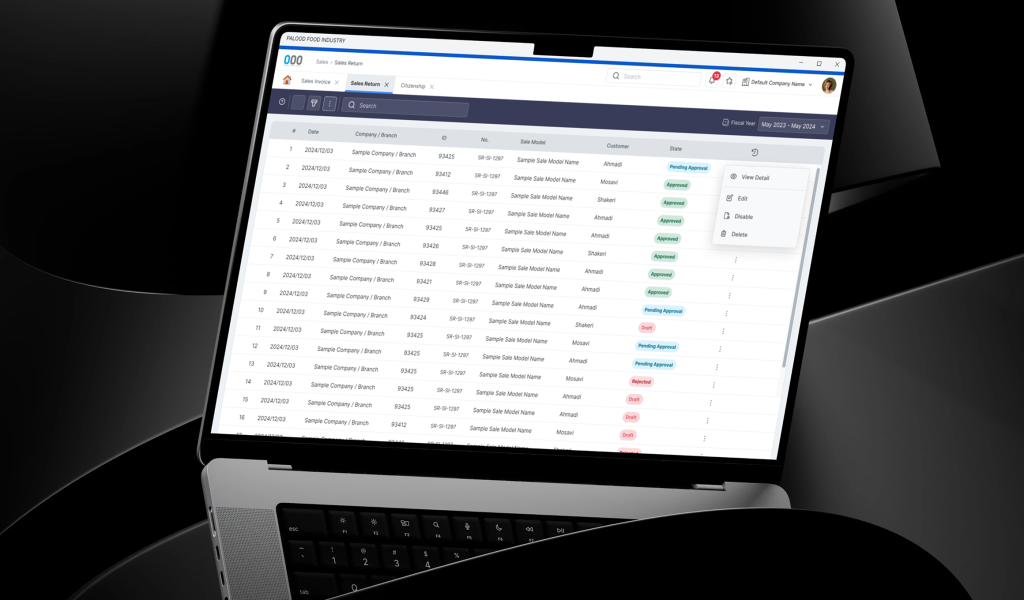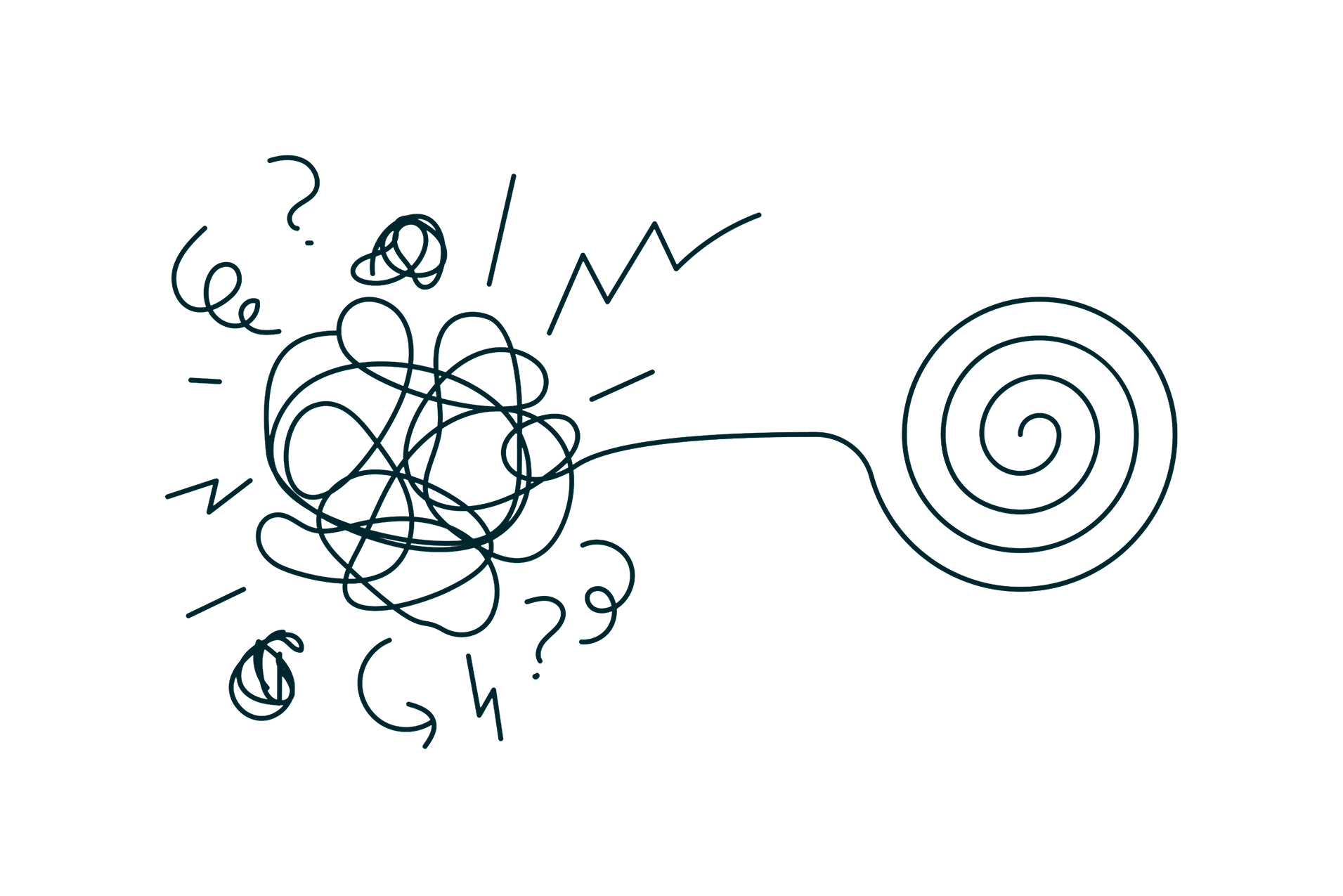
Designing for success
With the growing demand for web-based ERP (Enterprise Resource Planning) solutions and the need to improve accessibility, security, and ease of installation and support, our goal is to design and develop a modern, secure, and user-friendly web version of our ERP System. This new version, utilizing the latest technologies, allows users to access the system anytime, anywhere, while reducing the need for local installation and increasing the efficiency of our support services.
Our goal is to design and develop a modern, secure, and user-friendly web version of our ERP System.
Understand
In order to make objective design decisions, we started our design process by conducting stakeholder and existing customers interviews that is a crucial step in defining the scope and priorities of our web-based project.
As a result we gain a deeper understanding of our user’s needs and pain points with the Windows-based software.
Interview with internal product owner (CEO)
To understand business goals, market position, and success criteria, we were in contact with the founder of the company to make sure we understood their needs and goals. The main objectives of the web-based software are to modernize. Our desktop app served us well, but the future is in the cloud. We want to compete seriously with newer web-based players and reduce support costs.
Benchmark
What are the main business goals we hope to achieve with the web-based version?
- We went to the market to learn more about the environment and identify opportunities. We analyzed the following aspects:
- How do we see this product differentiating from competitors?
- Why should customers choose us over competitors?
| Feature/Capability | Our Desktop Version | Planned Web Version | Competitor A | Competitor B |
|---|---|---|---|---|
| Platform Type | Desktop (Windows) | Web (Cloud) | Web-based (Cloud) | Web-based (Cloud) |
| Ease of Installation/Access | Manual setup | Browser-based | Browser-based | Browser-based |
| Remote Access | No | Yes | Yes | Yes |
| UI/UX Design | Outdated | Modern, Responsive | Clean, functional | Polished, creative |
| Custom Reports | Yes (advanced) | Yes | Limited customization | Limited |
| Localization | Strong | Strong | Strong | Weak |
| Inventory Management | Advanced | Advanced | Basic | Advanced |
| Pricing | Affordable | Affordable | Expensive for full suite | Subscription-based |
| Multi-user & Permissions | Granular roles planned | Advanced | Advanced | Role-based |
| CRM Integration | Full CRM | Planned | Full CRM | Full CRM |
The most important results from our competitor analysis were:
- Most competitors offer open-source model attracts developers and tech-savvy users.
- Our competitors provide intuitive and accessible design for non-technical users.
- In addition most competitors offer affordable prices to customers by providing Subscription Model in different package.
Usability Testing
As part of our research and product modernization efforts, a usability test was conducted on the existing desktop version with the help of our company’s support team and customers. The goal was to understand user behavior, uncover usability issues, and gather feedback for improvement.
The most important finding from the test include:
- Inconsistent terminology and lack of visual grouping led to confusion.
- Users were unable to easily understand the dependencies between different features.
- Users found it difficult to navigate the software due to a complex and unintuitive structure.
Impact on Users:
- Increased frustration and dependency on support teams.
- Time-consuming onboarding for new users.
- Increased risk of data entry errors due to misunderstanding workflows.
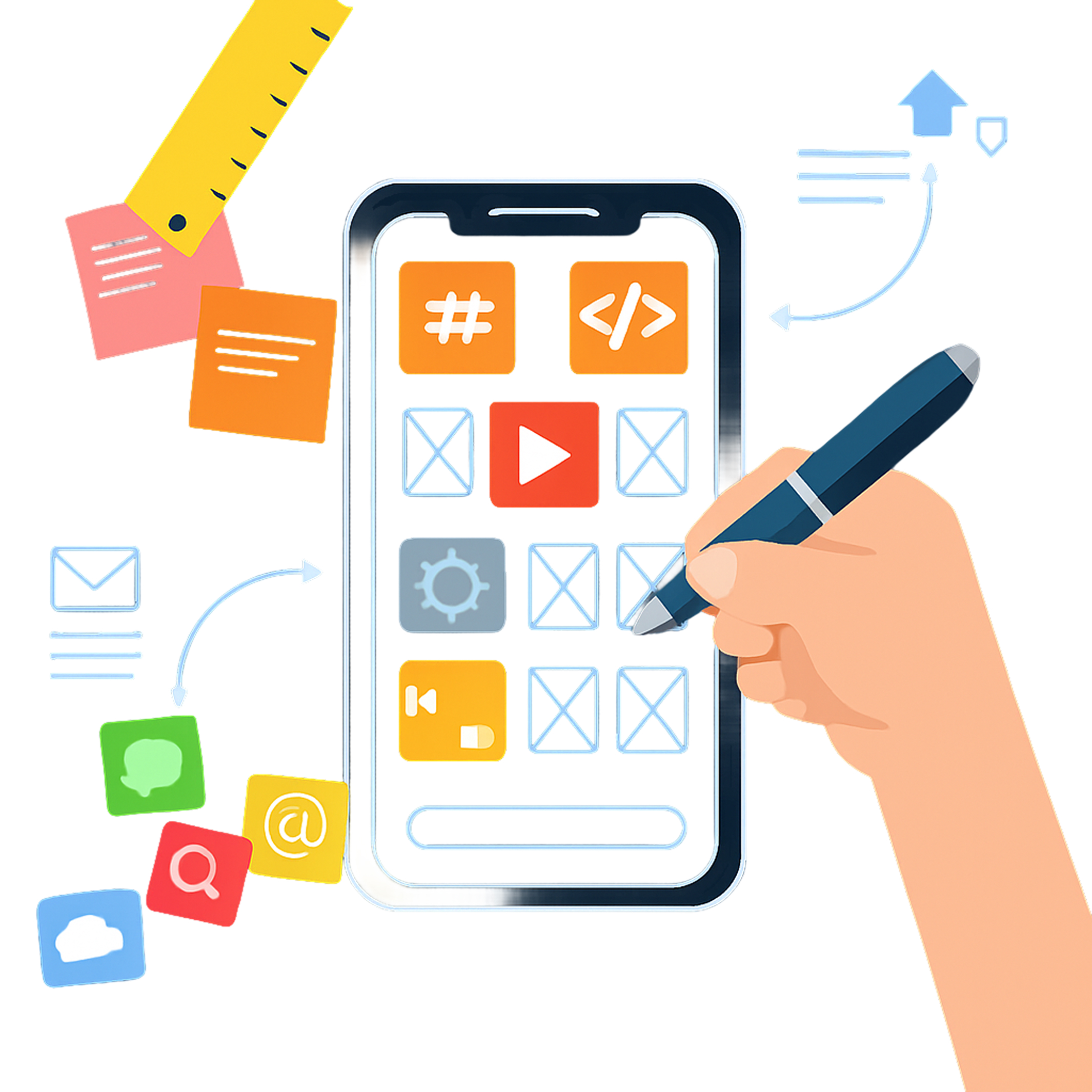
Affinity Diagram
Here is an Affinity Diagram summarizing the key usability issues discovered during testing of our desktop software, organized into thematic categories.
Problem Statement
- Users found it difficult to navigate the software due to a complex and unintuitive structure.
- Users were unable to easily understand the dependencies between different features.
- New users (and even some experienced users) reported that learning to use the system effectively took significant time and effort.
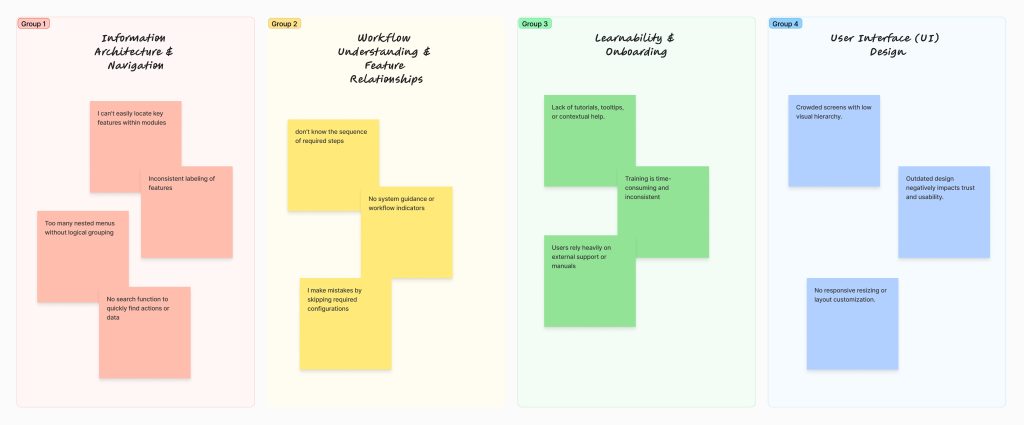
Ideation
In the ideation stage we focus on generating an idea for creating a modern, cloud-based ERP platform that would address the issues in problem statement session.
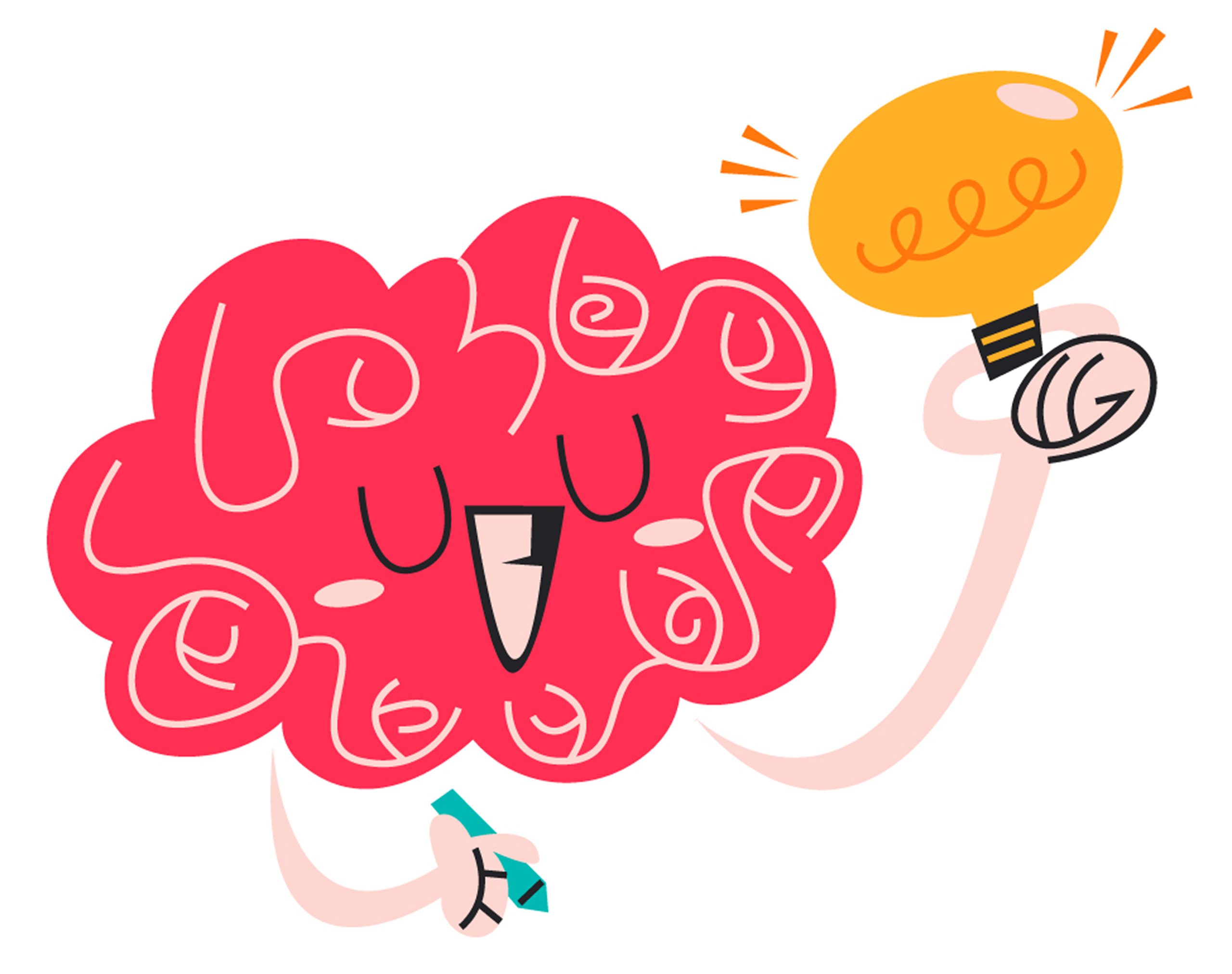
Brainstorming
A group of people discuss their potential solutions for a given problem and new ideas
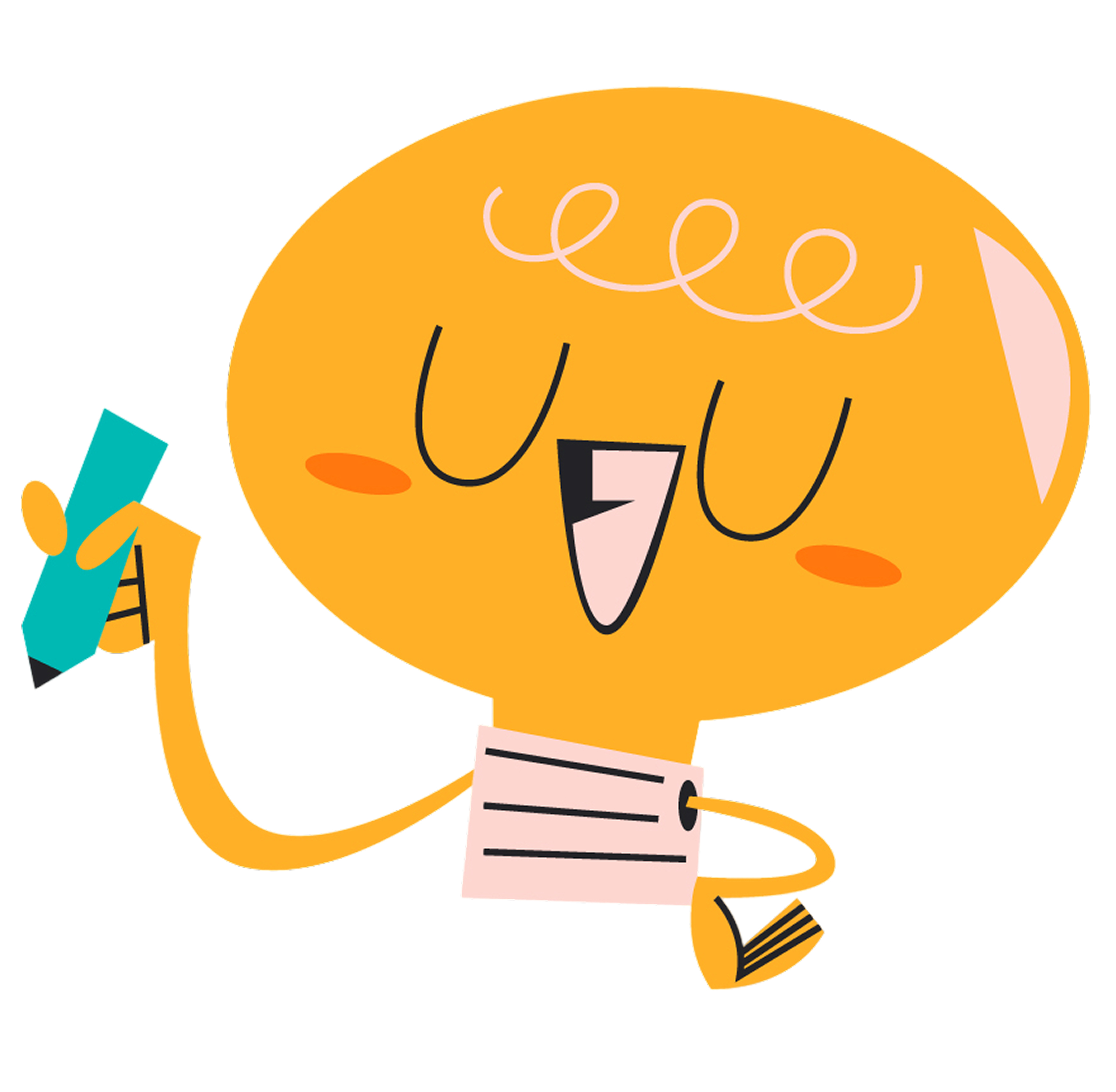
Storyboarding
Designer create a visual story in order to structure and present their ideas
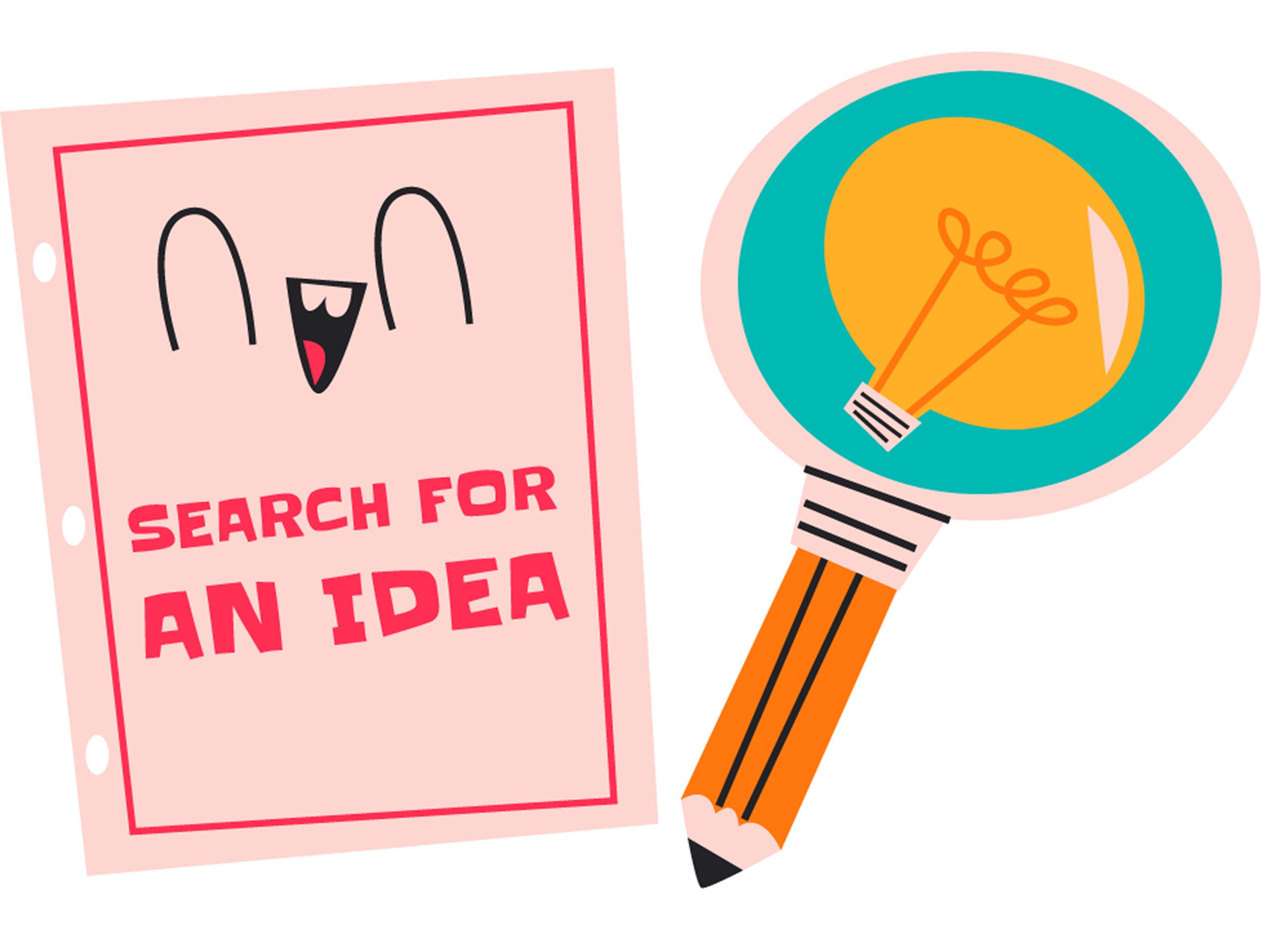
Mind Mapping
Write the problem in a phrase in a rough paper and then around it you write possible solutions for the problem
